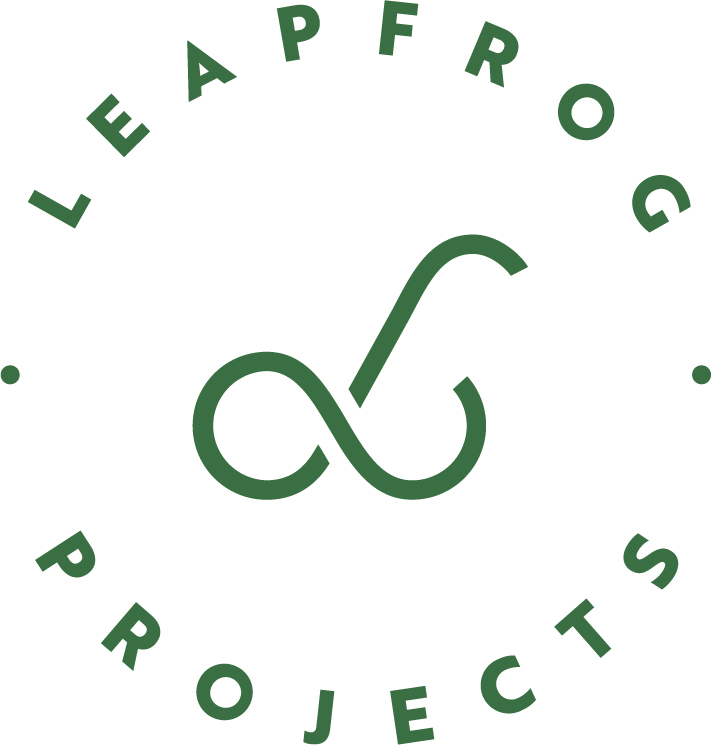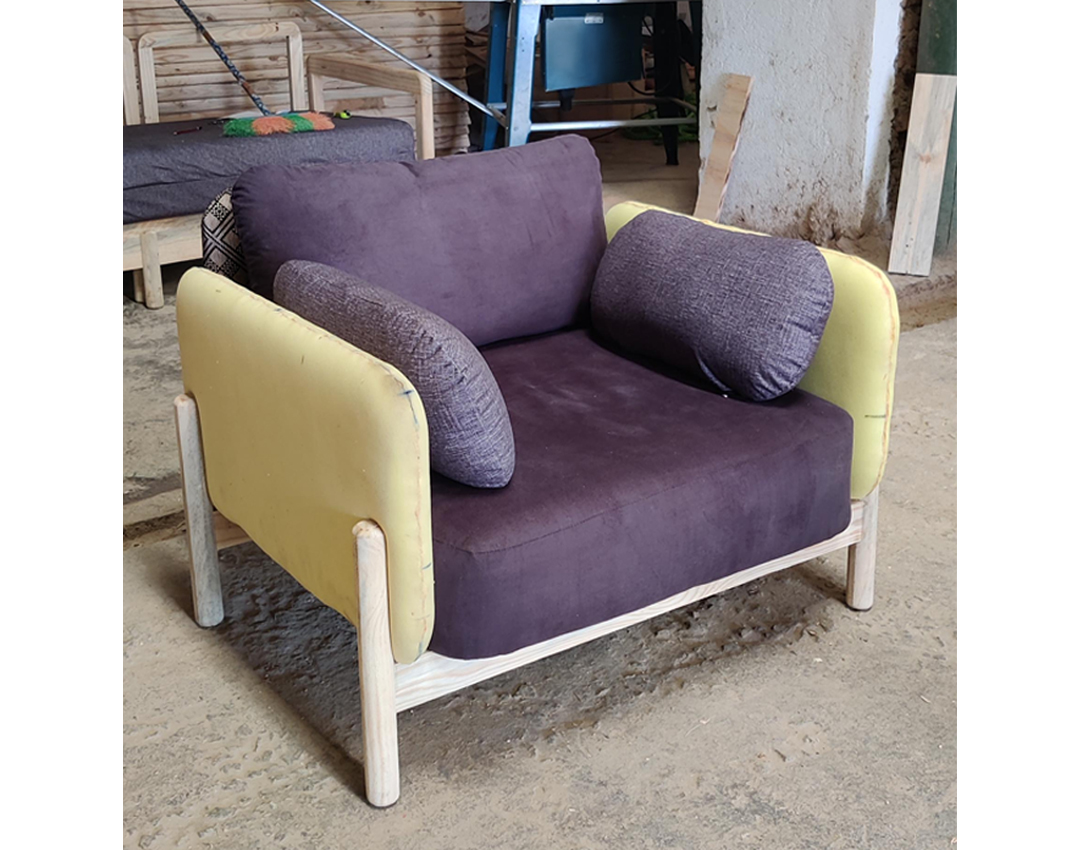Transitioning towards a more sustainable furniture market in Tanzania
Transitioning towards a more sustainable furniture market in Tanzania
My dream is to be able to do good and make an impact through my work. In
March 2022 I got an opportunity to move to Tanzania to work as a furniture
designer, employed by Leapfrog Projects, in a development cooperation project (PFP2)
between the governments of Tanzania and Finland.
Within the current furniture market situation in Tanzania, natural forest cover declines, rural poverty prevails and unsustainable import feeds the growing local demand. At the same time, current furniture supply does not meet the needs of the growing middle class in urban Tanzania.
The main goal of the project, PFP 2 (Participatory Plantation Forestry Program) is to promote sustainable and inclusive private forestry that contributes to Tanzania’s economic growth and alleviates poverty. Furniture constitutes a product segment for local wood with the biggest realistic opportunity for added value per unit sold. Therefore, the project aims to create a local market for socially and environmentally produced wooden furniture.
The product line consists of affordable and durable furniture for urban Tanzanian home. Based on the markets and needs analysis, the form language of the collection is modern, minimalistic and modular with a possibility for customization.
All the pieces are designed flat pack for more economic transportation from the rural areas of production closer to the markets in the urban areas. The main material of the collection is sustainably grown Eucalyptus. Production of the pieces of furniture also employs local upholsterers and basket makers. The pieces are new to the local market but simple enough to be able to make with modest woodworking machines and hand tools.
PFP2
Leapforg Projects
Within the current furniture market situation in Tanzania, natural forest cover declines, rural poverty prevails and unsustainable import feeds the growing local demand. At the same time, current furniture supply does not meet the needs of the growing middle class in urban Tanzania.
The main goal of the project, PFP 2 (Participatory Plantation Forestry Program) is to promote sustainable and inclusive private forestry that contributes to Tanzania’s economic growth and alleviates poverty. Furniture constitutes a product segment for local wood with the biggest realistic opportunity for added value per unit sold. Therefore, the project aims to create a local market for socially and environmentally produced wooden furniture.
The product line consists of affordable and durable furniture for urban Tanzanian home. Based on the markets and needs analysis, the form language of the collection is modern, minimalistic and modular with a possibility for customization.
All the pieces are designed flat pack for more economic transportation from the rural areas of production closer to the markets in the urban areas. The main material of the collection is sustainably grown Eucalyptus. Production of the pieces of furniture also employs local upholsterers and basket makers. The pieces are new to the local market but simple enough to be able to make with modest woodworking machines and hand tools.
PFP2
Leapforg Projects








Furniture for urban
Tanzanian homes
Within the current furniture market situation in Tanzania, the supply does not meet the needs of the growing middle class in urban Tanzania. There is need for locally and ethically made furniture, but locally made furniture are often heavy and rigid, usually made of indigenous wood and the style is traditional. This leads to unsustainable, low-quality import feeding the growing demand. The product line is designed to fill this gap between the production and the markets.
Sofa bed is one of the best received piece of the collection which indicates the need for multi-functional furniture. It is designed for an urban middle class home in Tanzania to better meet the needs for durable, affordable, minimalistic, and customizable furniture for small space living.
Within the current furniture market situation in Tanzania, the supply does not meet the needs of the growing middle class in urban Tanzania. There is need for locally and ethically made furniture, but locally made furniture are often heavy and rigid, usually made of indigenous wood and the style is traditional. This leads to unsustainable, low-quality import feeding the growing demand. The product line is designed to fill this gap between the production and the markets.
Sofa bed is one of the best received piece of the collection which indicates the need for multi-functional furniture. It is designed for an urban middle class home in Tanzania to better meet the needs for durable, affordable, minimalistic, and customizable furniture for small space living.
Alleviating rural poverty
in Tanzania
All the pieces of the collection are made locally in Tanzanian countryside providing work and income for the carpenters and upholsterers.
The sofa system consists of seats and legs of different sizes. Combining the units, it is possible to build seats from a one-person armchair to a corner sofa for the whole family. The final form of the sofa is result of close cooperation between the designer, the makers and the end users. User feedback was gathered throughout the design process and local upholsterers were consulted continuously.
All the pieces of the collection are made locally in Tanzanian countryside providing work and income for the carpenters and upholsterers.
The sofa system consists of seats and legs of different sizes. Combining the units, it is possible to build seats from a one-person armchair to a corner sofa for the whole family. The final form of the sofa is result of close cooperation between the designer, the makers and the end users. User feedback was gathered throughout the design process and local upholsterers were consulted continuously.










Empowering women
I lived in a small town, Iringa region in Southern highlands of Tanzania working closely together with local carpenters. Most of the carpenters and upholsterers are men and we pondered how to get women involved in the project. In Iringa region I saw all kinds of baskets everywhere. They are used for carrying everything, selling fruits and vegetables, they are sold in almost every corner and traditionally made by women. I heard later that the exact area is known in Tanzania for its baskets.
Including basket elements into the furniture, we could include basket makers into the project. The basket tables have storage space inside, and they come in three sizes. The legs and the tabletops are made of sustainably grown eucalyptus. The structure inside is made of plywood and the cutting is made so that there is as little waste material as possible. Instead of weaving the material in the shape of a basket, for flat-pack-ability, it is woven flat and then cut in right size.
I lived in a small town, Iringa region in Southern highlands of Tanzania working closely together with local carpenters. Most of the carpenters and upholsterers are men and we pondered how to get women involved in the project. In Iringa region I saw all kinds of baskets everywhere. They are used for carrying everything, selling fruits and vegetables, they are sold in almost every corner and traditionally made by women. I heard later that the exact area is known in Tanzania for its baskets.
Including basket elements into the furniture, we could include basket makers into the project. The basket tables have storage space inside, and they come in three sizes. The legs and the tabletops are made of sustainably grown eucalyptus. The structure inside is made of plywood and the cutting is made so that there is as little waste material as possible. Instead of weaving the material in the shape of a basket, for flat-pack-ability, it is woven flat and then cut in right size.
Flat-pack-ability
The flat-pack concept isn’t widely familiar in Tanzania. Sourcing the right fittings and fasteners and introducing the benefits of the flat-pack option for the carpenters and for the customer was a big and challenging part of the job too.
Flat-pack-ability and as simple production as possible were the starting points for the chair design. The workshops in rural Tanzania are small and most of them only have modest woodworking machines or just hand tools. There are no veneer lamination press machines, so to be able to make curved backrests, we had to come up with something else and work with what is available. I was lucky to work with such a talented wood technologist who came up with an idea to use empty barrels (that have perfect radius for a backrest) for the veneer lamination.
For a possibility for customization, there are backrests of two different heights.
The flat-pack concept isn’t widely familiar in Tanzania. Sourcing the right fittings and fasteners and introducing the benefits of the flat-pack option for the carpenters and for the customer was a big and challenging part of the job too.
Flat-pack-ability and as simple production as possible were the starting points for the chair design. The workshops in rural Tanzania are small and most of them only have modest woodworking machines or just hand tools. There are no veneer lamination press machines, so to be able to make curved backrests, we had to come up with something else and work with what is available. I was lucky to work with such a talented wood technologist who came up with an idea to use empty barrels (that have perfect radius for a backrest) for the veneer lamination.
For a possibility for customization, there are backrests of two different heights.






Modular, simple and
expandable collection
What does a Finnish designer have to give to a project in Tanzania? A very common way to do carpentry in Tanzania, is to make furniture to orders from a picture saved from Pinterest. The carpenters are experts in replicating but only few of them have any carpentry education which unfortunately leads to poor quality furniture.
I am not a carpenter either, but I am good at designing systems, concepts and furniture. The collection is designed so that most of the pieces use same or similar elements. Together with the team we gave the carpenters education of methods and joints that are used in the whole collection and can be adapted in their other jobs too. By simplifying and minimizing the amount of different methods and elements, there is no need for big investments either. With the similar elements, it is also possible to expand the collection with new items.
The cabinet is made using similar veneer lamination method than the small chairs. All the other pieces of the furniture collection use the same leg and stretcher structure.
What does a Finnish designer have to give to a project in Tanzania? A very common way to do carpentry in Tanzania, is to make furniture to orders from a picture saved from Pinterest. The carpenters are experts in replicating but only few of them have any carpentry education which unfortunately leads to poor quality furniture.
I am not a carpenter either, but I am good at designing systems, concepts and furniture. The collection is designed so that most of the pieces use same or similar elements. Together with the team we gave the carpenters education of methods and joints that are used in the whole collection and can be adapted in their other jobs too. By simplifying and minimizing the amount of different methods and elements, there is no need for big investments either. With the similar elements, it is also possible to expand the collection with new items.
The cabinet is made using similar veneer lamination method than the small chairs. All the other pieces of the furniture collection use the same leg and stretcher structure.






